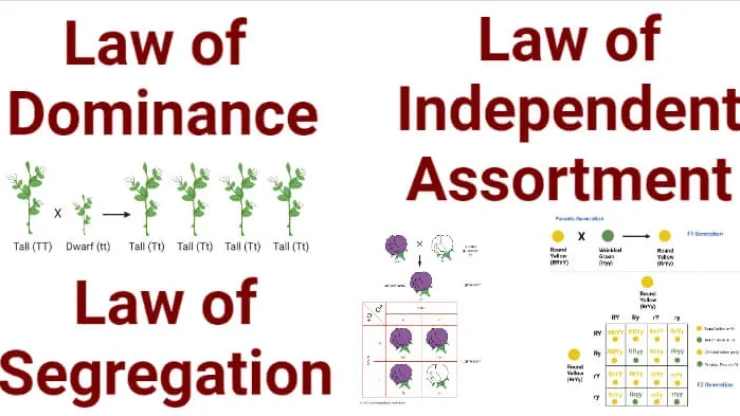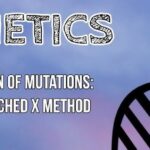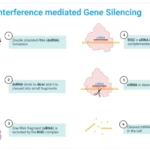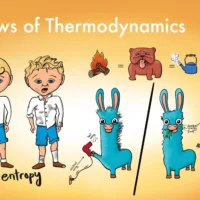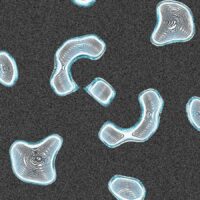Gregor Johann Mendel, an Austrian monk (1822–1884), is recognized as the father of genetics. He laid the foundation for understanding heredity through his breakthrough work with pea plants. By conducting meticulous experiments, Mendel established that traits are transferred from parents to offspring in a predictable manner. Today, genetics heavily relies on his pioneering studies. Specifically, he formulated three main principles: the Law of Segregation, the Law of Independent Assortment, and the Law of Dominance.
For his experiments, Mendel chose Pisum sativum, commonly known as pea plants, due to their ease of cultivation, short life cycle, and ability to self-fertilize. He focused on seven visible traits, each clearly distinguishable and qualitative, such as flower color, seed shape, and stem length. This careful trait selection was partly why his experiments succeeded. As a result, Mendel concluded that each characteristic is controlled by a pair of factors—now known as genes—which separate during gamete formation. His seminal work, Experiments on Plant Hybridization, was presented in 1865 but initially remained obscure. However, in 1900, three biologists—Hugo de Vries, Carl Correns, and Erich Tschermak—independently rediscovered Mendel’s findings, validating his conclusions and giving rise to classical genetics.
Experiments
For his experiment, Mendel preferred Pisum sativum, which is easy to culture, has a short life cycle, and can self-fertilize. He described seven visible traits in the pea plants that were purely qualitative in nature—traits easily classified into distinct phenotypes such as flower color, seed shape, and stem length. This careful selection of traits contributed to Mendel’s success.
The Seven Traits Examined by Mendel:
- Stalk height: Tall (dominant) vs. dwarf (recessive)
- Placement of flowers: Axial (dominant) vs. terminal (recessive)
- Color of flower: Violet (dominant) vs. white (recessive)
- Pod shape: Inflated (dominant) vs. constricted (recessive)
- Pod color: Green (dominant) vs. yellow (recessive)
- Seed color: Yellow (dominant) vs. green (recessive)
- Shape of seed: Round (dominant) vs. wrinkled (recessive)
Each character exhibited a unique inheritance pattern with one character dominant over the other. Mendel proved traits were governed by factors (now called alleles) that came in pairs, one from each parent. These factors segregate during gamete formation, so each parent contributes only one allele per characteristic.
Genes and Alleles
Definition of a Gene
A gene refers to a part of DNA that determines a particular trait in an organism. The term “gene” was coined by Danish botanist Wilhelm Johannsen in 1909. Mendel’s factors are now known as genes, which carry the information necessary to express traits. The exact location of a gene on a chromosome is called the locus.
Alleles
Alleles are different forms of a gene. For example, a gene controlling flower color may have an allele for red and another for white. These alleles occupy the same locus on homologous chromosomes but have different effects on the trait.
Alleles result from gene mutations altering the DNA sequence. These mutations may lead to:
- Generation of a normal product
- Production of a more or less efficient product
- Generation of a non-functional product
- No product formation at all
Alleles occurring in more than 1% of a population are called wild-type alleles, while those in less than 1% are mutant alleles. Wild-type alleles govern common traits, and mutant alleles govern rare traits.
Dominance Relationships
Wild-type and mutant alleles interact in three main ways:
- Complete dominance: One allele completely masks the other.
- Incomplete dominance: Neither allele dominates; the heterozygous phenotype is intermediate.
- Codominance: Both alleles express equally in the phenotype.
In Mendel’s pea plants, dominance was complete. For example, tallness (T) was dominant over dwarfism (t), so genotype Tt yields a tall plant.
Genotype and Phenotype
Genotype
The genotype is an organism’s genetic constitution or the specific allele combination. Three genotypes exist in diploid organisms:
- Homozygous dominant (TT)
- Homozygous recessive (tt)
- Heterozygous (Tt)
Phenotype
The phenotype is the observable trait resulting from the genotype. For example, TT and Tt genotypes both produce tall plants, while tt produces dwarf plants.
Though genotype determines traits, environmental factors can influence phenotype expression.
Mendel’s Laws of Inheritance
Law of Segregation
Based on monohybrid crosses, this law states that alleles separate during gamete formation, so each gamete carries only one allele.
Example: Crossing true-breeding tall (TT) with dwarf (tt) plants produced F1 heterozygous tall plants (Tt). When F1 plants self-crossed, the F2 generation showed a 3:1 phenotypic ratio (tall:dwarf), indicating allele segregation.
Law of Independent Assortment
Using dihybrid crosses, this law states that allele pairs segregate independently during gamete formation, producing new trait combinations.
Example: Crossing YYRR (yellow, round seeds) with yyrr (green, wrinkled seeds) produced F1 plants heterozygous for both traits (YyRr). F2 showed a 9:3:3:1 ratio of the four possible phenotypes, proving independent assortment.
Incomplete Dominance and Codominance
Incomplete Dominance
Neither allele dominates; heterozygote phenotype is intermediate.
Example: Crossing red-flowered Mirabilis jalapa with white-flowered produces pink-flowered offspring. F2 phenotypic ratio is 1 red : 2 pink : 1 white.
Codominance
Both alleles fully express in heterozygotes.
Example: In humans, the MN blood group shows codominance. Genotype MM expresses M antigen, NN expresses N antigen, and MN expresses both equally.
Test Cross
A test cross determines the genotype of an individual with a dominant phenotype by crossing it with a homozygous recessive.
Case 2: If both tall and dwarf offspring appear, the tall plant is heterozygous (Tt).
Case 1: If a tall plant (unknown genotype) crossed with dwarf (tt) produces only tall offspring, the tall plant is homozygous dominant (TT).
Engage with Us:
Stay tuned for more captivating insights and News. Visit our Blogs , Science paper , Study Portal and Follow Us on social media to never miss an update. Together, let’s unravel the mysteries of the natural world.

